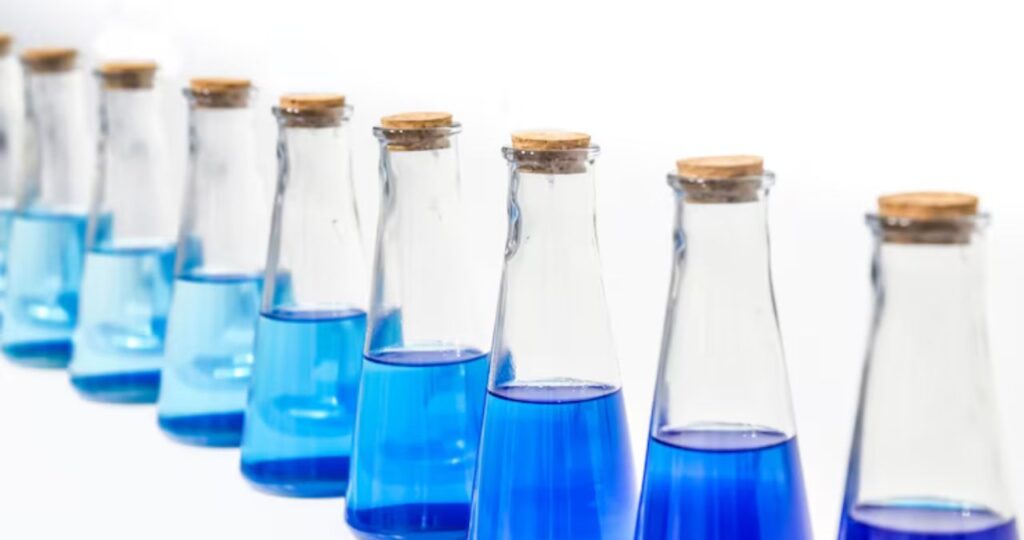Understanding chemical compounds is crucial for both researchers and students in fields ranging from chemistry to environmental science. One intriguing combination that often sparks questions is HCOOH CH2 H2O. Whether you’re studying chemistry or are simply curious, this blog post explores what these compounds are, their significance, and how they interact with each other.
We’ll cover everything from the basics of these molecules to their real-world applications. By the time you finish reading, you’ll understand their structure, roles, and importance in both science and industry.
Breaking Down the Basics
Before we explore how hcooch ch2 h2o interact, it’s important to define what each of these compounds represents. They form the building blocks of various chemical reactions, so understanding their structures and uses is key.
What is HCOOH?
HCOOH is the chemical formula for formic acid, the simplest carboxylic acid. It consists of one carbon atom, two oxygen atoms, and two hydrogen atoms. Formic acid is naturally present in some stinging insects, like ants and bees, and plays a vital role in industry.
Key Properties of HCOOH:
- Molecular Weight: Approximately 46.03 g/mol.
- Appearance: A colorless liquid with a pungent, vinegar-like odor.
- Acidity: Formic acid is highly acidic due to its carboxylic acid group (-COOH).
##### Common Uses of HCOOH:
- Textile Industry: Used for dyeing fabrics, particularly wool.
- Preservatives: Plays a role in animal feed preservation.
- Leather Production: Utilized to tan and process leather.
What is CH2?
CH2 refers to a methylene group, a simple molecule made up of one carbon atom and two hydrogen atoms. While CH2 needs to be part of a larger structure (like a hydrocarbon chain) to exist stably, it’s a fundamental building block in organic chemistry.
Examples of When CH2 is Found:
- Polymers: CH2 units make up major parts of polyethylene plastic.
- Fuels: Hydrocarbons like methane and ethane contain CH2 groups.
- Organic Reactions: Methylene bridges help connect larger molecules.
The Role of H2O
H2O, or water, is one of the most well-known and vital substances on Earth. Its polar structure makes it an excellent solvent, facilitating countless chemical reactions in living organisms and industrial processes.
Key Properties of H2O:
- Molecular Weight: 18.015 g/mol.
- Polarity: The molecule’s polarity allows it to dissolve ionic compounds and polar substances.
Everyday Applications:
- Biological Activities: Water is critical in cellular functions, including respiration and photosynthesis.
- Industrial Solvent: Water is used across various industries for reactions, cooling, and cleaning.
How HCOOH, CH2, and H2O Interact
Now that we’ve explored the fundamentals of each compound, it’s time to connect the dots. How do they interact, and why are these combinations significant?
Reaction between HCOOH and H2O
When formic acid (HCOOH) interacts with water (H2O), it dissociates into ions. Water’s polar nature allows it to act as a solvent, turning formic acid molecules into hydrogen ions (H+) and formate ions (HCOO-).
Chemical Equation:
HCOOH ⇌ H+ + HCOO-
Practical Example:
Formic acid and water mixtures are often used in organic solvents and as a medium for chemical reactions, thanks to their balance of strong acidity and solubility.
Role of CH2 in Organic Reactions
When adding CH2 groups to a reaction, such as aliphatic hydrocarbons, water (H2O) can also play an indirect role. Water works as a medium in organic chemistry, ensuring that the reaction containing CH2 or its derivatives proceeds as intended without losing efficiency.
Synthesis of Complex Structures
These compounds often come together in laboratory or industrial settings for the creation of more complex organic and synthetic compounds. For example, formic acid and water play complementary roles when CH2 groups form part of long carbon chains like alkanes or alcohols.
Real World Applications
The combination of HCOOH, CH2, and H2O is not simply a theoretical phenomenon. These components have critical uses in industries such as agriculture, biotechnology, and energy.
Green Chemistry Applications
Formic acid and water are part of emerging sustainable technologies. For instance, formic acid acts as a potential hydrogen carrier in green energy initiatives. Both methylene derivatives and water enable cleaner production methods, reducing environmental footprints.
Pharmaceutical Industry
CH2 units form part of complex drug molecules, and reactions involving hcooch ch2 h2o are used in several pharmaceutical processes. These ensure that medicines maintain stability and efficacy.
Food and Beverage
Formic acid and water are standard in food preservation. HCOOH is particularly effective as an antibacterial agent, while water facilitates safe cleaning and food processing operations.
Challenges and Considerations
Though hcooch ch2 h2o are valuable, they present some challenges in processing and handling.
- Toxicity:
-
- Formic acid can cause skin irritations or burns upon contact.
- Reactivity:
-
- Water facilitates reactions, but uncontrolled environments may lead to unintended results.
- Storage and Handling:
-
- HCOOH is corrosive, requiring specific precautions during transport or storage.
By understanding these hurdles, businesses and professionals can better utilize these compounds without compromising safety and efficiency.
Taking the Next Step
HCOOH CH2 H2O may seem like a random mix of chemical formulas, but their importance in everyday applications and industrial processes cannot be overstated. Whether you’re fascinated by how they interact in nature or you’re working directly with them in a lab, a deep understanding of these compounds can open doors to innovation.
If you’re a student, professional, or researcher eager to explore more about chemical reactions and their applications, consider partnering with experts, accessing tools, or reading specialized literature to enhance your knowledge.






